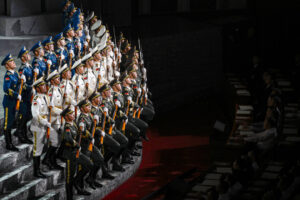
The **Panavia Tornado**, a multirole fighter aircraft that has served various military forces since its introduction in **1979**, is nearing the end of its operational life. After more than four decades as a crucial component of European and Middle Eastern air power, the Tornado is being replaced by more advanced aircraft, including the **Eurofighter Typhoon** and **Lockheed Martin’s F-35 Lightning II**. The decision to retire the Tornado reflects the evolving demands of modern warfare, which increasingly require advanced technologies and capabilities.
The Tornado was developed as a collaborative effort among the **United Kingdom**, **West Germany**, and **Italy**. Its unique variable-sweep wing design allowed it to excel in both low and high-speed operations, making it particularly suited for low-level penetration strikes. The aircraft came in three main variants: the **Tornado IDS** (Interdictor/Strike), the **Tornado ECR** (Electronic Combat/Reconnaissance), and the **Tornado ADV** (Air Defense Variant). This adaptability enabled the Tornado to fulfill multiple roles, including precision ground attacks and suppression of enemy air defenses.
Operational Challenges and Retirement
Despite its storied history, the Tornado has faced challenges that have contributed to its retirement. The aircraft has participated in numerous conflicts, including **Desert Storm**, **Kosovo**, **Iraq**, and **Afghanistan**, but its capabilities have diminished in the context of 21st-century warfare. The **United Kingdom** formally retired its Tornado fleet in **2019**, marking the end of an era after 40 years of service. **Germany** and **Italy** continue to operate their Tornados, but they are also moving towards complete retirement by the late **2020s**. The **Kingdom of Saudi Arabia**, the Tornado’s only non-European operator, remains the last significant user of the aircraft, but even it is shifting focus towards acquiring more modern platforms.
The Tornado’s limitations become increasingly apparent as modern military operations demand features such as stealth technology, advanced sensors, and the ability to engage in network-centric warfare. These capabilities are essential for effective operations in contested airspace. Additionally, maintaining the aging Tornado fleet has become increasingly costly. With spare parts becoming harder to source and maintenance cycles lengthening, the operational viability of the Tornado has diminished.
The Future of Air Power
NATO is actively pursuing a transition to multirole fighters that can efficiently perform a diverse range of missions without the logistical complications associated with older aircraft. The **Eurofighter Typhoon** offers advanced air-to-air capabilities and modern avionics, positioning it as a suitable replacement for the Tornado. Meanwhile, the **F-35 Lightning II** introduces advanced stealth features, data fusion, and interoperability with allied forces, aligning with contemporary military doctrines that emphasize rapid deployment and electronic warfare resilience.
While the **Panavia Tornado** has proven itself a reliable contributor in various conflicts, its operational era is concluding in favor of platforms better equipped to handle the complexities of modern battlefields. As military forces around the world evolve, the transition to next-generation aircraft illustrates a commitment to enhancing air power capabilities in an increasingly challenging global security environment.
The retirement of the Tornado underscores a significant shift in air warfare strategies, highlighting the importance of adapting to new technological advancements and operational requirements. The legacy of the Tornado will remain a testament to its historical significance and versatility, marking an important chapter in military aviation history.





